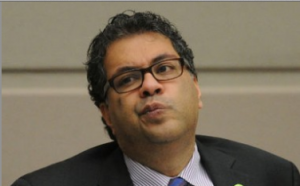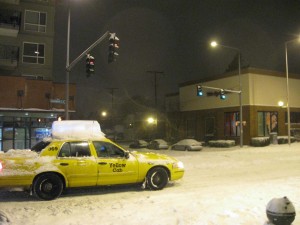The best that can be gathered from the latest figures and proposals from Calgary Transportation in their almost bizarrely obsessive pursuit of a downtown cycle network is that they have utterly no clue about the numbers and figures for anything and are willing to claim just about anything. The numbers change weekly and we really can no longer trust their source.
The ridiculous and utterly unfounded 12,000 cycle trip per day bullshit was being trotted out by our bureaucrats in city hall almost at the same time they are claiming that a separated cycle track network would triple current trips downtown from 1,500 to 4,500! Pardon me? Which is it this hour? 12,000 and 1,500 are rather far apart.
The bias from Calgary Transportation in this issue is getting pretty blatant and completely out of hand. These people are supposed to at least make a token effort to get objective figures and plan based on them. Just as mockery ensued when a prominent cycle advocate (and city employee) tried to claim that over 1,000 people per day use the 7 St. cycle track, people now can only roll their eyes when they see the latest round of wild projections and prognostications from Calgary’s clearly inept transportation department.
The department is trying to both suck and blow as they highball costs for testing while lowballing figures for ongoing maintenance required to keep the lanes. While it cost over $300,000 just to remove snow from the 7th St. track alone, the city is claiming that it would only be around $500,000 per year to maintain the entire proposed network? Sorry Blanca but I smell bullshit again.
The ludicrous cycle track proposal is going to cost well over $10,000,000. That much pretty much everybody can agree on.
We need real figures, real testing and we need to face the simple reality that the city of Calgary transportation department is way too biased and inept to do this job properly.
Independent counts for traffic need to be conducted over the course of an entire year and encompassing more than just peak utilization times. Traffic impact studies need to be done that determine more than just BS ways to claim that the impact of lane removals on existing commuter times will be minimal.
The only real traffic benefits that have been seen with cycle infrastructure so far has been almost solely due to optimization of traffic signals. It has to be asked then: why the hell aren’t the traffic signals already set up to optimize traffic flow??? Fix the signals first (without the bike tracks), then get traffic flow reports, then one can consider adding a cycle track and seeing just how badly it bungs up the works.
Real counts need to be done and then real goals need to be set. What would be considered a success with the cycle tracks? A doubling of cyclists? Tripling? It would take an increase of about 5000 per day to merit the closure of a lane on Macleod Tr. as proposed. The impact on existing commuters needs to be measured and taken into account too. If we gain 400 cyclists but disrupt 5000 cars, was this worth it?
As I have posted here too, a comprehensive study found that separated bike lanes harmed businesses badly in Vancouver causing an 11% drop in sales in some cases. Losses of hundreds of parking spaces will impact businesses too. We can’t move on this based on pie-in-the-sky references to “green” bike blogs that make a poor case that cycle tracks increase business. We need real study on these things.
We need to put some of this to the test. Clearly the city of Calgary transportation department is nowhere even close to taking this sort of project on yet.
Calgary City Council needs to send the hyper-aggressive cycle-track proposal back to the drawing board.
Calgary Transportation needs some lessons in reality and in math before they can come back and try to drop such a major plan on city council again. The concept is simply way too big to start when the bureaucrats clearly have utterly no clue of the need, impacts or costs associated with the network.












